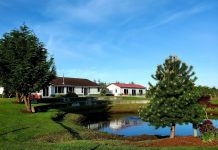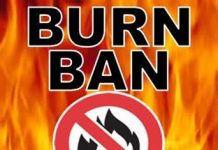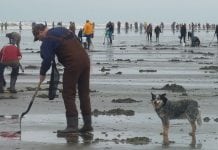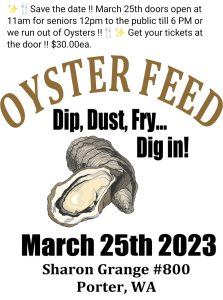This calendar is the place to find fun events happening throughout Grays Harbor County including Aberdeen, Hoquiam, Westport, Ocean Shores, Elma, Montesano and beyond.
Have an event that isn’t listed? Please email events@GraysHarborTalk.com with the following information:
- Name of Event
- Date, time and location (name of business if applicable and complete address)
- Organizer(s) name
- Cost
- URL to purchase tickets
- Website URL
- SHORT description of event
- Photo
Our editors will review and post within a few business days.
First Presbyterian Church of Aberdeen invites you to a FREE Christmas Cantata “By Heaven’s Light” performed by our choir on Sun, Dec 18 at 10 am. 420 N Broadway, Aberdeen, WA 98520.

Heather Osoy is an Aberdeen resident, Women’s Fiction Writers Association member, and homeschool mama.
Come in to learn about and purchase a signed copy of her debut psychological women’s fiction novel, TO HOLD ONESELF.
Already have a copy of her novel? Bring it in to be signed!
Checked it out at the library already? Come in to buy your own signed copy!
?Book Blurb?
On a damp, breezy morning in the spring of 2018, we meet Carol Davis- a charismatic hospice patient. She has a confession to make. That confession leads to a desperate plea, as she wants to redeem herself before time runs out. There is help, but it comes with unwelcome consequences. It becomes apparent that there is more behind the confession… and more to Carol.?Events unfold through the perspectives of a few other women in her life: Lauren, Jamie and Denise. Unbeknownst to those three, they suffer from similar invisible wounds. They also share a conviction that their ability to mend themselves depends on how well they cater to a woman they think they know.
Six days of razor clam digging at Mocrocks beaches starts Friday, Feb. 17, Copalis Beach opens Saturday, Feb. 18
OLYMPIA – Washington Department of Fish and Wildlife (WDFW) shellfish managers today confirmed razor clam digging reopens at Mocrocks beaches Friday, Feb. 17 followed by opportunities Feb. 19 and Feb. 21. This is in addition to Copalis Beach open on Saturday, Feb.18, Feb. 20, and Feb. 22.
“The forecast looks good for another six days of razor clam harvest on Copalis and Mocrocks only,” said Bryce Blumenthal, a WDFW coastal shellfish biologist. “That combined with later sunsets and deeper low tides should provide plenty of opportunity for successful digging.”
The following digs during evening (p.m.) low tides will proceed as scheduled:
- Feb. 17, Friday, 4:29 p.m.; -0.7 feet; Mocrocks
- Feb. 18, Saturday, 5:19 p.m.; -1.2 feet; Copalis
- Feb. 19, Sunday, 6:04 p.m.; -1.5 feet; Mocrocks
- Feb. 20, Monday, 6:46 p.m.; -1.4 feet; Copalis
- Feb. 21, Tuesday, 7:26 p.m.; -1.0 feet; Mocrocks
- Feb. 22, Wednesday, 8:05 p.m.; -0.3 feet; Copalis
The Washington Department of Health (WDOH) labs indicate domoic acid levels at Long Beach and Twin Harbors beaches were still above the health guideline levels. WDFW will announce future digging opportunities when marine toxin tests show it is safe to do so.
Domoic acid, a natural toxin produced by certain types of marine algae, can be harmful or fatal if consumed in sufficient quantities. WDFW shellfish staff will continue to regularly dig test samples of razor clams to monitor the situation. WDOH requires two test samples taken around seven days apart, must fall under the health guideline level before a beach can reopen for razor clam digging. More information about domoic acid, as well as current levels at ocean beaches, can be found on WDFW’s domoic acid webpage.
The daily limit is 15 razor clams per person. Under state law, a daily limit consists of the first 15 clams dug regardless of size or condition, and each digger’s clams must be kept in a separate container. Digging is prohibited in the razor clam reserve located just south of the Ocean City approach on Copalis, which are marked by 10-foot poles with signs. The most successful digging occurs between one and two hours before the listed time of low tide.
All diggers age 15 or older must have an applicable fishing license to harvest razor clams on any beach. Licenses may be purchased on WDFW’s licensing website, and from hundreds of license vendors around the state. WDFW recommends buying your license before visiting coastal beach communities.
For additional details, go to the WDFW’s razor clam webpage and the DOH webpage. To be notified of in-season rule changes as they are announced sign up for email notifications at wdfw.wa.gov/about/lists.
The Washington Department of Fish and Wildlife works to preserve, protect, and perpetuate fish, wildlife and ecosystems while providing sustainable fish and wildlife recreational and commercial opportunities.
Six days of razor clam digging at Mocrocks beaches starts Friday, Feb. 17, Copalis Beach opens Saturday, Feb. 18
OLYMPIA – Washington Department of Fish and Wildlife (WDFW) shellfish managers today confirmed razor clam digging reopens at Mocrocks beaches Friday, Feb. 17 followed by opportunities Feb. 19 and Feb. 21. This is in addition to Copalis Beach open on Saturday, Feb.18, Feb. 20, and Feb. 22.
“The forecast looks good for another six days of razor clam harvest on Copalis and Mocrocks only,” said Bryce Blumenthal, a WDFW coastal shellfish biologist. “That combined with later sunsets and deeper low tides should provide plenty of opportunity for successful digging.”
The following digs during evening (p.m.) low tides will proceed as scheduled:
- Feb. 17, Friday, 4:29 p.m.; -0.7 feet; Mocrocks
- Feb. 18, Saturday, 5:19 p.m.; -1.2 feet; Copalis
- Feb. 19, Sunday, 6:04 p.m.; -1.5 feet; Mocrocks
- Feb. 20, Monday, 6:46 p.m.; -1.4 feet; Copalis
- Feb. 21, Tuesday, 7:26 p.m.; -1.0 feet; Mocrocks
- Feb. 22, Wednesday, 8:05 p.m.; -0.3 feet; Copalis
The Washington Department of Health (WDOH) labs indicate domoic acid levels at Long Beach and Twin Harbors beaches were still above the health guideline levels. WDFW will announce future digging opportunities when marine toxin tests show it is safe to do so.
Domoic acid, a natural toxin produced by certain types of marine algae, can be harmful or fatal if consumed in sufficient quantities. WDFW shellfish staff will continue to regularly dig test samples of razor clams to monitor the situation. WDOH requires two test samples taken around seven days apart, must fall under the health guideline level before a beach can reopen for razor clam digging. More information about domoic acid, as well as current levels at ocean beaches, can be found on WDFW’s domoic acid webpage.
The daily limit is 15 razor clams per person. Under state law, a daily limit consists of the first 15 clams dug regardless of size or condition, and each digger’s clams must be kept in a separate container. Digging is prohibited in the razor clam reserve located just south of the Ocean City approach on Copalis, which are marked by 10-foot poles with signs. The most successful digging occurs between one and two hours before the listed time of low tide.
All diggers age 15 or older must have an applicable fishing license to harvest razor clams on any beach. Licenses may be purchased on WDFW’s licensing website, and from hundreds of license vendors around the state. WDFW recommends buying your license before visiting coastal beach communities.
For additional details, go to the WDFW’s razor clam webpage and the DOH webpage. To be notified of in-season rule changes as they are announced sign up for email notifications at wdfw.wa.gov/about/lists.
The Washington Department of Fish and Wildlife works to preserve, protect, and perpetuate fish, wildlife and ecosystems while providing sustainable fish and wildlife recreational and commercial opportunities.
Six days of razor clam digging at Mocrocks beaches starts Friday, Feb. 17, Copalis Beach opens Saturday, Feb. 18
OLYMPIA – Washington Department of Fish and Wildlife (WDFW) shellfish managers today confirmed razor clam digging reopens at Mocrocks beaches Friday, Feb. 17 followed by opportunities Feb. 19 and Feb. 21. This is in addition to Copalis Beach open on Saturday, Feb.18, Feb. 20, and Feb. 22.
“The forecast looks good for another six days of razor clam harvest on Copalis and Mocrocks only,” said Bryce Blumenthal, a WDFW coastal shellfish biologist. “That combined with later sunsets and deeper low tides should provide plenty of opportunity for successful digging.”
The following digs during evening (p.m.) low tides will proceed as scheduled:
- Feb. 17, Friday, 4:29 p.m.; -0.7 feet; Mocrocks
- Feb. 18, Saturday, 5:19 p.m.; -1.2 feet; Copalis
- Feb. 19, Sunday, 6:04 p.m.; -1.5 feet; Mocrocks
- Feb. 20, Monday, 6:46 p.m.; -1.4 feet; Copalis
- Feb. 21, Tuesday, 7:26 p.m.; -1.0 feet; Mocrocks
- Feb. 22, Wednesday, 8:05 p.m.; -0.3 feet; Copalis
The Washington Department of Health (WDOH) labs indicate domoic acid levels at Long Beach and Twin Harbors beaches were still above the health guideline levels. WDFW will announce future digging opportunities when marine toxin tests show it is safe to do so.
Domoic acid, a natural toxin produced by certain types of marine algae, can be harmful or fatal if consumed in sufficient quantities. WDFW shellfish staff will continue to regularly dig test samples of razor clams to monitor the situation. WDOH requires two test samples taken around seven days apart, must fall under the health guideline level before a beach can reopen for razor clam digging. More information about domoic acid, as well as current levels at ocean beaches, can be found on WDFW’s domoic acid webpage.
The daily limit is 15 razor clams per person. Under state law, a daily limit consists of the first 15 clams dug regardless of size or condition, and each digger’s clams must be kept in a separate container. Digging is prohibited in the razor clam reserve located just south of the Ocean City approach on Copalis, which are marked by 10-foot poles with signs. The most successful digging occurs between one and two hours before the listed time of low tide.
All diggers age 15 or older must have an applicable fishing license to harvest razor clams on any beach. Licenses may be purchased on WDFW’s licensing website, and from hundreds of license vendors around the state. WDFW recommends buying your license before visiting coastal beach communities.
For additional details, go to the WDFW’s razor clam webpage and the DOH webpage. To be notified of in-season rule changes as they are announced sign up for email notifications at wdfw.wa.gov/about/lists.
The Washington Department of Fish and Wildlife works to preserve, protect, and perpetuate fish, wildlife and ecosystems while providing sustainable fish and wildlife recreational and commercial opportunities.
Six days of razor clam digging at Mocrocks beaches starts Friday, Feb. 17, Copalis Beach opens Saturday, Feb. 18
OLYMPIA – Washington Department of Fish and Wildlife (WDFW) shellfish managers today confirmed razor clam digging reopens at Mocrocks beaches Friday, Feb. 17 followed by opportunities Feb. 19 and Feb. 21. This is in addition to Copalis Beach open on Saturday, Feb.18, Feb. 20, and Feb. 22.
“The forecast looks good for another six days of razor clam harvest on Copalis and Mocrocks only,” said Bryce Blumenthal, a WDFW coastal shellfish biologist. “That combined with later sunsets and deeper low tides should provide plenty of opportunity for successful digging.”
The following digs during evening (p.m.) low tides will proceed as scheduled:
- Feb. 17, Friday, 4:29 p.m.; -0.7 feet; Mocrocks
- Feb. 18, Saturday, 5:19 p.m.; -1.2 feet; Copalis
- Feb. 19, Sunday, 6:04 p.m.; -1.5 feet; Mocrocks
- Feb. 20, Monday, 6:46 p.m.; -1.4 feet; Copalis
- Feb. 21, Tuesday, 7:26 p.m.; -1.0 feet; Mocrocks
- Feb. 22, Wednesday, 8:05 p.m.; -0.3 feet; Copalis
The Washington Department of Health (WDOH) labs indicate domoic acid levels at Long Beach and Twin Harbors beaches were still above the health guideline levels. WDFW will announce future digging opportunities when marine toxin tests show it is safe to do so.
Domoic acid, a natural toxin produced by certain types of marine algae, can be harmful or fatal if consumed in sufficient quantities. WDFW shellfish staff will continue to regularly dig test samples of razor clams to monitor the situation. WDOH requires two test samples taken around seven days apart, must fall under the health guideline level before a beach can reopen for razor clam digging. More information about domoic acid, as well as current levels at ocean beaches, can be found on WDFW’s domoic acid webpage.
The daily limit is 15 razor clams per person. Under state law, a daily limit consists of the first 15 clams dug regardless of size or condition, and each digger’s clams must be kept in a separate container. Digging is prohibited in the razor clam reserve located just south of the Ocean City approach on Copalis, which are marked by 10-foot poles with signs. The most successful digging occurs between one and two hours before the listed time of low tide.
All diggers age 15 or older must have an applicable fishing license to harvest razor clams on any beach. Licenses may be purchased on WDFW’s licensing website, and from hundreds of license vendors around the state. WDFW recommends buying your license before visiting coastal beach communities.
For additional details, go to the WDFW’s razor clam webpage and the DOH webpage. To be notified of in-season rule changes as they are announced sign up for email notifications at wdfw.wa.gov/about/lists.
The Washington Department of Fish and Wildlife works to preserve, protect, and perpetuate fish, wildlife and ecosystems while providing sustainable fish and wildlife recreational and commercial opportunities.
Six days of razor clam digging at Mocrocks beaches starts Friday, Feb. 17, Copalis Beach opens Saturday, Feb. 18
OLYMPIA – Washington Department of Fish and Wildlife (WDFW) shellfish managers today confirmed razor clam digging reopens at Mocrocks beaches Friday, Feb. 17 followed by opportunities Feb. 19 and Feb. 21. This is in addition to Copalis Beach open on Saturday, Feb.18, Feb. 20, and Feb. 22.
“The forecast looks good for another six days of razor clam harvest on Copalis and Mocrocks only,” said Bryce Blumenthal, a WDFW coastal shellfish biologist. “That combined with later sunsets and deeper low tides should provide plenty of opportunity for successful digging.”
The following digs during evening (p.m.) low tides will proceed as scheduled:
- Feb. 17, Friday, 4:29 p.m.; -0.7 feet; Mocrocks
- Feb. 18, Saturday, 5:19 p.m.; -1.2 feet; Copalis
- Feb. 19, Sunday, 6:04 p.m.; -1.5 feet; Mocrocks
- Feb. 20, Monday, 6:46 p.m.; -1.4 feet; Copalis
- Feb. 21, Tuesday, 7:26 p.m.; -1.0 feet; Mocrocks
- Feb. 22, Wednesday, 8:05 p.m.; -0.3 feet; Copalis
The Washington Department of Health (WDOH) labs indicate domoic acid levels at Long Beach and Twin Harbors beaches were still above the health guideline levels. WDFW will announce future digging opportunities when marine toxin tests show it is safe to do so.
Domoic acid, a natural toxin produced by certain types of marine algae, can be harmful or fatal if consumed in sufficient quantities. WDFW shellfish staff will continue to regularly dig test samples of razor clams to monitor the situation. WDOH requires two test samples taken around seven days apart, must fall under the health guideline level before a beach can reopen for razor clam digging. More information about domoic acid, as well as current levels at ocean beaches, can be found on WDFW’s domoic acid webpage.
The daily limit is 15 razor clams per person. Under state law, a daily limit consists of the first 15 clams dug regardless of size or condition, and each digger’s clams must be kept in a separate container. Digging is prohibited in the razor clam reserve located just south of the Ocean City approach on Copalis, which are marked by 10-foot poles with signs. The most successful digging occurs between one and two hours before the listed time of low tide.
All diggers age 15 or older must have an applicable fishing license to harvest razor clams on any beach. Licenses may be purchased on WDFW’s licensing website, and from hundreds of license vendors around the state. WDFW recommends buying your license before visiting coastal beach communities.
For additional details, go to the WDFW’s razor clam webpage and the DOH webpage. To be notified of in-season rule changes as they are announced sign up for email notifications at wdfw.wa.gov/about/lists.
The Washington Department of Fish and Wildlife works to preserve, protect, and perpetuate fish, wildlife and ecosystems while providing sustainable fish and wildlife recreational and commercial opportunities.
Six days of razor clam digging at Mocrocks beaches starts Friday, Feb. 17, Copalis Beach opens Saturday, Feb. 18
OLYMPIA – Washington Department of Fish and Wildlife (WDFW) shellfish managers today confirmed razor clam digging reopens at Mocrocks beaches Friday, Feb. 17 followed by opportunities Feb. 19 and Feb. 21. This is in addition to Copalis Beach open on Saturday, Feb.18, Feb. 20, and Feb. 22.
“The forecast looks good for another six days of razor clam harvest on Copalis and Mocrocks only,” said Bryce Blumenthal, a WDFW coastal shellfish biologist. “That combined with later sunsets and deeper low tides should provide plenty of opportunity for successful digging.”
The following digs during evening (p.m.) low tides will proceed as scheduled:
- Feb. 17, Friday, 4:29 p.m.; -0.7 feet; Mocrocks
- Feb. 18, Saturday, 5:19 p.m.; -1.2 feet; Copalis
- Feb. 19, Sunday, 6:04 p.m.; -1.5 feet; Mocrocks
- Feb. 20, Monday, 6:46 p.m.; -1.4 feet; Copalis
- Feb. 21, Tuesday, 7:26 p.m.; -1.0 feet; Mocrocks
- Feb. 22, Wednesday, 8:05 p.m.; -0.3 feet; Copalis
The Washington Department of Health (WDOH) labs indicate domoic acid levels at Long Beach and Twin Harbors beaches were still above the health guideline levels. WDFW will announce future digging opportunities when marine toxin tests show it is safe to do so.
Domoic acid, a natural toxin produced by certain types of marine algae, can be harmful or fatal if consumed in sufficient quantities. WDFW shellfish staff will continue to regularly dig test samples of razor clams to monitor the situation. WDOH requires two test samples taken around seven days apart, must fall under the health guideline level before a beach can reopen for razor clam digging. More information about domoic acid, as well as current levels at ocean beaches, can be found on WDFW’s domoic acid webpage.
The daily limit is 15 razor clams per person. Under state law, a daily limit consists of the first 15 clams dug regardless of size or condition, and each digger’s clams must be kept in a separate container. Digging is prohibited in the razor clam reserve located just south of the Ocean City approach on Copalis, which are marked by 10-foot poles with signs. The most successful digging occurs between one and two hours before the listed time of low tide.
All diggers age 15 or older must have an applicable fishing license to harvest razor clams on any beach. Licenses may be purchased on WDFW’s licensing website, and from hundreds of license vendors around the state. WDFW recommends buying your license before visiting coastal beach communities.
For additional details, go to the WDFW’s razor clam webpage and the DOH webpage. To be notified of in-season rule changes as they are announced sign up for email notifications at wdfw.wa.gov/about/lists.
The Washington Department of Fish and Wildlife works to preserve, protect, and perpetuate fish, wildlife and ecosystems while providing sustainable fish and wildlife recreational and commercial opportunities.

Anatomy education is preventative care!
The best way to keep everyone safe and healthy is to make sure we all have the language to talk about our anatomy. Participants will deepen their knowledge of reproductive anatomy by making anatomy collages while they hear “the story of the egg” and “the story of the sperm.” We will offer a show and tell about period care products so that everyone knows their options and the pros and cons of various methods. Participants will leave the program equipped with the knowledge to better advocate and care for their bodies.
Registration fees are $0 thanks to sponsorship from Grays Harbor Community Foundation.
Rogue Wrestling Attractions is here with LIVE Professional Wrestling. Entertainment for all!
Match Card For The Night:
Grudge Match – “TNT” Tyson Lee Vs Kobias Topps
Match To The Top Match – Christopher Ryseck Vs Caleb Rexx Vs Billy Bob Wheeler
RWA Tag Team Champions Tournament Continues!
“HellBound’s” “HellBlazer” Draven Vargas and “HellHound” Petrov VS Gorgo “The Menacing” and “The Malicious” Malice
“NEXT LEVEL” Brian Cook and Austin Oso VS “LOS HALCÓNES” Halcón Negro and Halcón Negro Jr
The Main Event Of The Night For The RWA Harbor Havoc Championship:
“The Northman” Earnest Olsson will fight for gold in a one on one match against The Current RWA Harbor Havoc Champion- THEE RAT KING.
Head Referee – Sign Guy
Announcer – Johnny Mac
Commentary – Jeremiah Hughes & Luke Kilgore












































